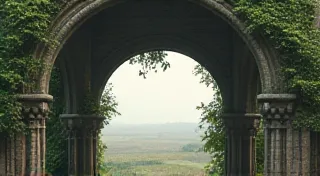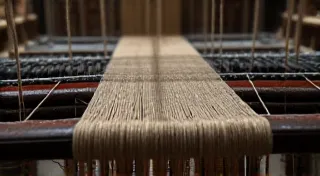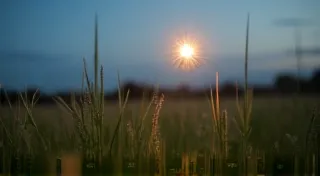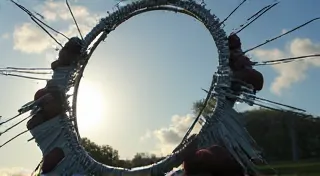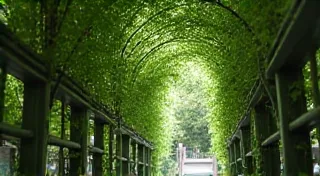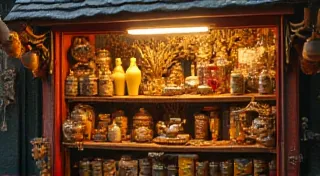Regional Dialect Guides: Exploring the Tapestry of Language
Dive into the fascinating world of regional dialects and uncover the unique stories embedded within the language spoken across diverse geographic areas. Our guides explore the intricate relationship between place, people, and the words they use, providing explanations, examples, and insights into the linguistic landscape. From a linguistics perspective, we examine the structures and patterns that shape these variations.
What is a Regional Dialect?
A regional dialect isn’t simply about a funny accent. It’s a complex system of language – a distinctive variety of a language spoken in a particular area. It encompasses pronunciation, vocabulary, grammar, and even common expressions. Think of it as a linguistic fingerprint, revealing a region's history, its people, and its unique way of seeing the world. Viewed through the lens of linguistics, dialects provide valuable data for understanding language evolution and variation.
These variations arise from a myriad of influences. Historical migration patterns, trade routes, environmental factors, social hierarchies, and political events all contribute to the subtle – and sometimes dramatic – differences we hear across the country and around the globe. Understanding these influences is key to truly appreciating the richness of human communication. This is a core principle in the study of linguistics.
The Human Story Behind the Words
The beauty of studying regional dialects lies not just in the linguistic details, but in the human story they tell. These linguistic variations are often deeply intertwined with a community’s identity and sense of belonging. For many, their dialect is a cherished part of their heritage, a way to connect with their ancestors and reaffirm their place in the world. However, the journey of a dialect is often complex. Sometimes, dialects are viewed with prejudice, leading to social judgments and discrimination. As explored in "The Alchemy of Accent: How Perceptions of Dialect Shape Social Judgments", assumptions and biases can dramatically impact how we view others based on their speech.
The Impact of Agriculture and Trade
Consider how the land shapes our language. From Field to Table: How Agricultural Practices Mold Regional Vernacular beautifully illustrates this point, showing how the crops grown and farming methods employed in a region can directly influence the vocabulary and even grammatical structures of its regional dialect. Similarly, The Whisper of Trade: How Commerce Shapes Dialectal Vocabulary highlights how the exchange of goods and services brings new words and phrases into a local lexicon.
Beyond agriculture and commerce, historical events, particularly colonial influences, have left an indelible mark. Echoes of Occupation: How Colonialism Shaped Regional Speech examines the profound impact of colonial rule on the evolution of regional dialects, revealing how power dynamics have shaped the linguistic landscape. These influences are vital to understanding the development of linguistics.
The Fluidity and Fragility of Language
The boundaries of regional dialects aren’t fixed lines on a map. They’re more like shifting borders, constantly being influenced by the movement of people, the spread of ideas, and the ebb and flow of cultural trends. "The Dance of Dialects: Exploring the Fluidity of Language Boundaries" takes a closer look at this fascinating dynamic, illustrating how dialects blend, diverge, and evolve over time. Within seemingly homogenous regions, remarkable variation can also exist. "Fractured Reflections: Dialectal Variations Within a Single Community" reveals how even within the same town or neighborhood, subtle but significant differences in speech can exist, reflecting social class, family history, or local customs.
Sadly, many regional dialects are facing extinction. The accelerating pace of globalization and the dominance of standardized forms of language are putting pressure on these unique forms of expression. "Silent Sentinels: The Role of Elders in Preserving Dying Dialects" highlights the crucial role that older generations play in safeguarding these linguistic treasures, passing down stories, idioms, and pronunciations before they disappear. This loss is a key concern within preservationist linguistics.
Unearthing Linguistic History
Every word has a story. "The Ghosts of Words: Lexical Remnants and the Lingering Memory of Old Ways" explores how archaic words and phrases – what linguists sometimes call "lexical fossils" – offer a glimpse into a region's past, revealing connections to earlier languages and cultures. Decoding these fragments of the past can be a complex task. "Untangling the Vines: Deciphering the Origins of Obscure Dialectal Phrases" analyzes how these phrases originate and spread.
The study of language and humor provides further insight. As explored in "The Cartography of Humor: Finding the Funny in Regional Dialects", dialects are often a source of amusement, but also reflect cultural differences.
Further, dialect serves as a critical element of identity. "Dialect as Armor: Linguistic Identity and the Defense of Local Heritage" and "The Loom of Language: Weaving Together Regional Dialects and Narrative Identity" address the vital role dialect plays in shaping individual and community identities.
Mapping Language and its Influences
The study of regional dialects often involves a mapping process, attempting to visualize the geographic distribution of linguistic features. “The Cartographer's Tongue: Mapping the Unseen Boundaries of Local Language” dives into the methodologies and challenges of creating these linguistic maps, revealing how they can illuminate complex patterns of language variation. "The River’s Murmur: How Waterways Shape Linguistic Convergence and Divergence" also presents a geographical approach, showcasing how waterways have facilitated both the spread and the divergence of dialects.
People rarely stay put. The movement of populations has a profound impact on language. "Borrowed Light: The Influence of Migration on Regional Speech Patterns" examines this critical impact.
The Artistic Resonance of Dialect
Dialect finds expression in various art forms. "The Poet’s Quarry: Finding Inspiration in the Rhythms of Local Speech" explores how poets draw inspiration from the unique sounds and patterns of regional dialects. "A Symphony of Slang: How Youth Culture Reshapes Dialectal Norms" analyzes the evolving nature of slang and how youth culture influences dialect.
Preserving Linguistic Heritage
It’s crucial to appreciate and preserve these unique linguistic treasures. "Resonance and Rupture: The Role of Technology in Preserving or Threatening Regional Speech" considers the impact of technology on dialect preservation, while "Echoes in the Stone: How Topography Shapes Dialectal Drift" highlights the influence of geographical features.


